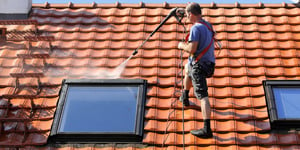Desalination Pumps: Why Pump Efficiency & Solar Capabilities Matter

Shawn Glover, VP of Sales, Aug 1, 2023

Desalination pumps, sometimes called watermakers, can be one of the most critical pieces of equipment on a sailboat, yacht, or other small cruising vessel. Having reliably safe, potable water while out to sea is especially important if there are engine troubles.
A single gallon of water weighs more than eight pounds. Storing enough water for passengers on a small sea vessel not only takes up room – it also weighs the boat down, decreasing fuel efficiency.
Many cruisers rely on solar-powered technology to help conserve fuel and battery power for other applications, or to serve as a backup energy source. Conserving energy is a major concern for operators when choosing a reverse osmosis pump.
Why? A pump’s efficiency rating in combination with its performance can make the difference between having an ample and reliable source of drinkable water or going without.
Recommended Solar Power for Boats
Over-consumption of solar power will begin to drain batteries, making the selection of every appliance and piece of electrical equipment — including watermaker pumps — a major decision.
To calculate the size of solar panel a vessel needs, determine how much energy consumption the various systems will consume. Consider all the electronics on a boat, from small refrigerators and microwaves to lights and navigation panels. As an example, an average microwave will draw 10 amps of power when running. Add everything up and you’ll have a better idea of your power needs.
As a general rule of thumb, smaller sea vessels need about 10 watts of power for every foot. So, a 30-foot boat should generate at least 300 watts of power. Again, this can vary depending on how much electrical equipment you run.
ALSO READ: Solar-Powered Uses of Plunger Pumps
Reverse Osmosis Watermaker Pump Efficiency
When choosing a watermaker system, it’s important to closely examine the pump motor’s efficiency rating. Efficiency is essentially the measurement of how well a pump converts electricity to horsepower. Many factors contribute to a pump’s efficiency rating, including its design, construction, and motor.
The simpler a pump design, the more efficient it will be. That is why a plunger pump is an ideal type of pump. Unlike diaphragm pumps which have flexible components that can wear out quickly and deliver inconsistent flow, plunger pumps have durable, rigid components that operate with smooth consistency and precision.
The Pumptec 107SS (formerly the Pumptec 116C) runs on a 12V system and draws only 10–13 amps. Most other desalination systems on the market draw five times as much. When considering the draw on solar power in combination with various appliances, the lower amperage draw can make a significant difference.
ALSO READ: The Critical Importance of High-Pressure Pump Efficiency
Don’t Forget Watermaker Pump Reliability
Ensuring consistent power and efficient operation is only possible when all other desired functions of a desalination pump work properly. Saltwater is highly corrosive to most metals, making it difficult to find a pump that can stand the test of time.
Seawater, consisting mostly of sodium chloride (common salt), is full of electrolytes which conduct ions. These ions speed up the corrosion process in many metal materials like iron. Reputable desalination pump manufacturers will only use marine-grade metals to build their products, helping to minimize potential corrosion.
Pumptec constructs its 107SS desalination pump body out of solid bars of marine-grade stainless steel which are machined down to extremely tight tolerances. Plungers are constructed of solid alumina ceramic that is highly polished, smooth, and non-porous, helping to maintain efficiency by reducing friction.
When paired with a good pressure vessel and membrane, the 107SS can deliver 30 gallons or more of fresh water daily that registers between 105-110 parts per million (ppm).
Those looking for desalination pumps need to consider the entire system’s operation to ensure that every single component is compatible with sodium chloride and that it operates at peak efficiency.
The desalination pump experts at Pumptec have helped configure the 107SS pump into customers’ solar-powered systems with ease, and are here to help you, too. Check out the 107SS specs and contact our team today. Also be sure to view our case study showing how it helped one major solar-powered watermaker pump manufacturer achieve their goals.




